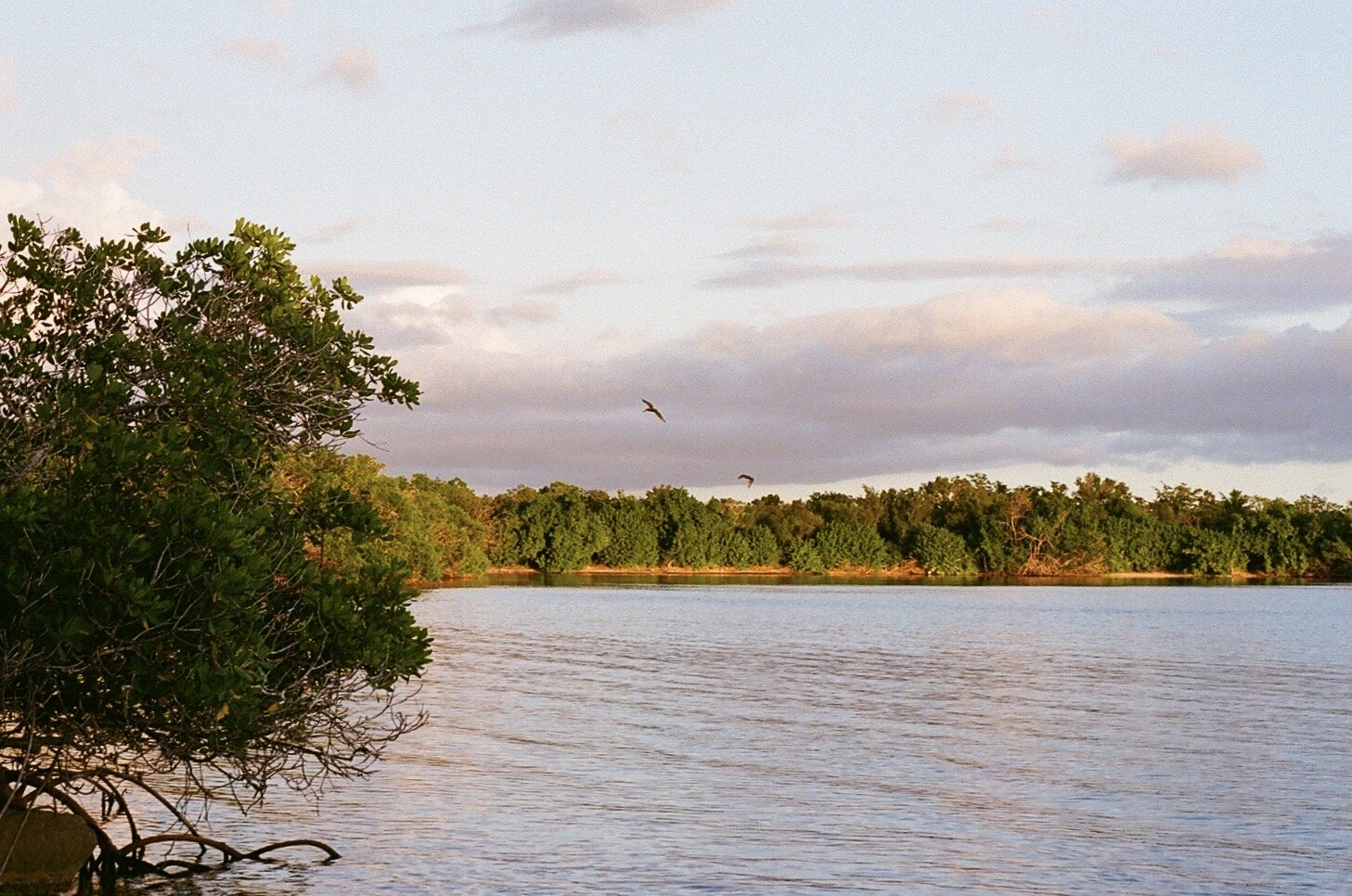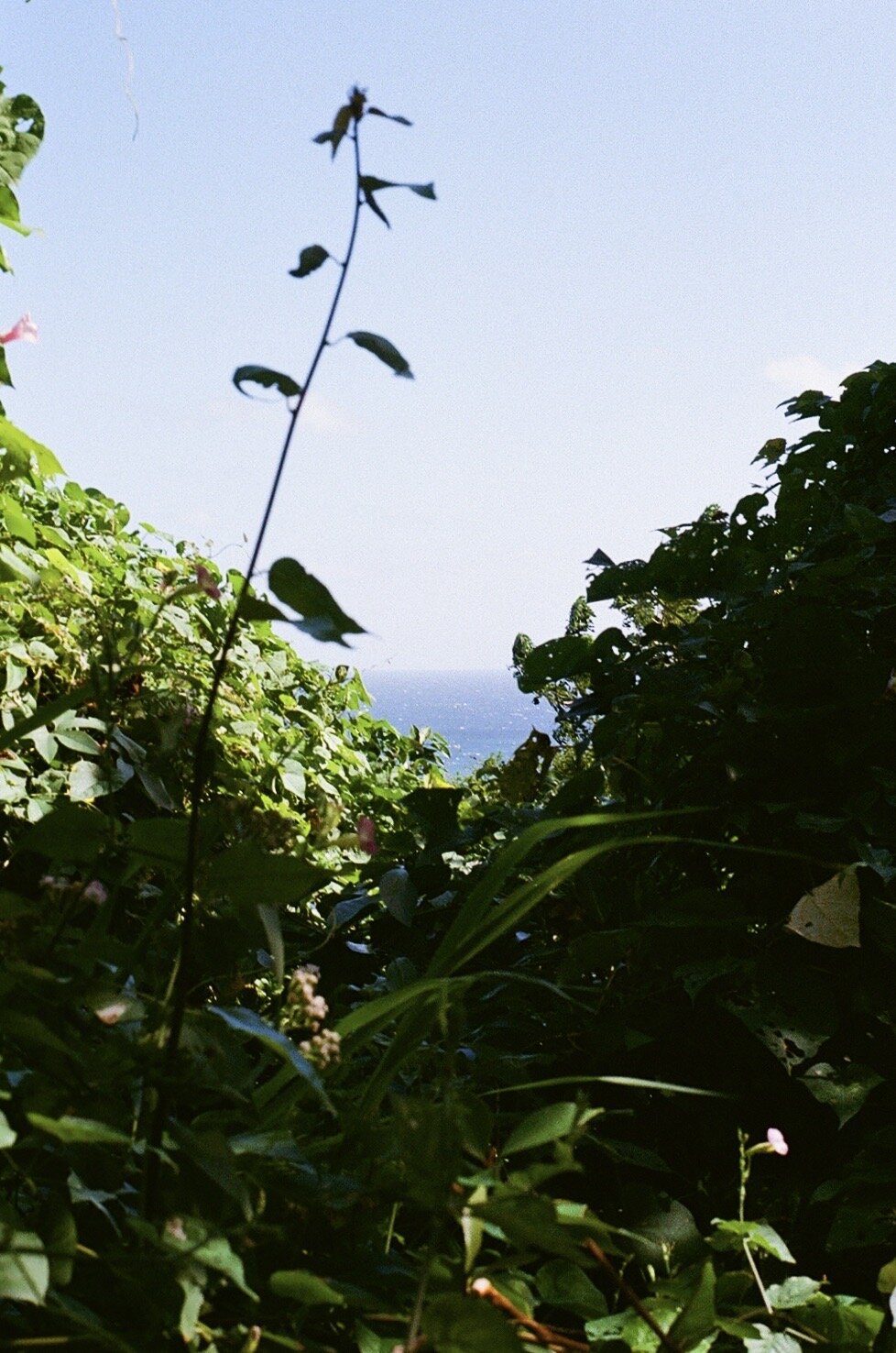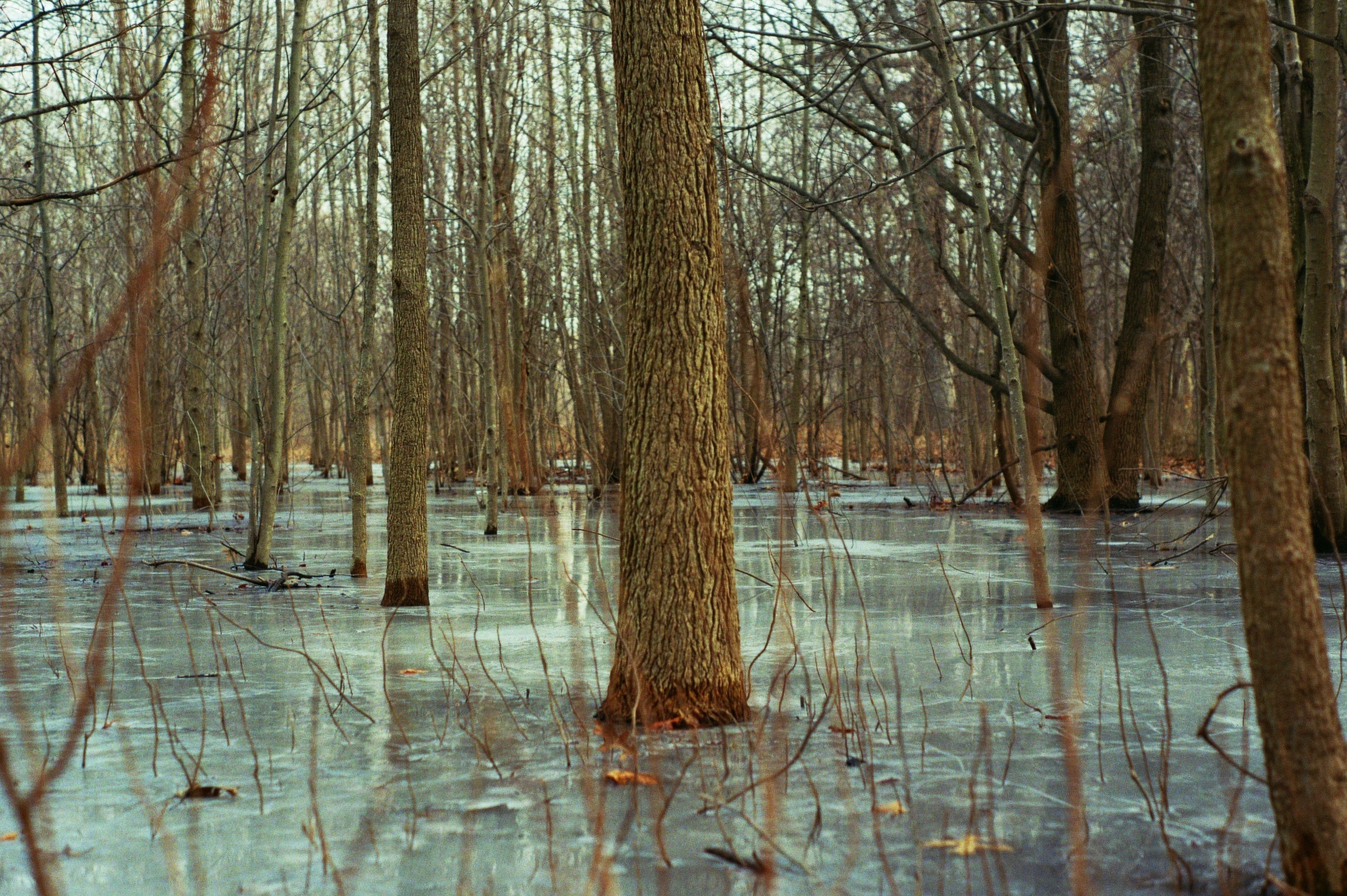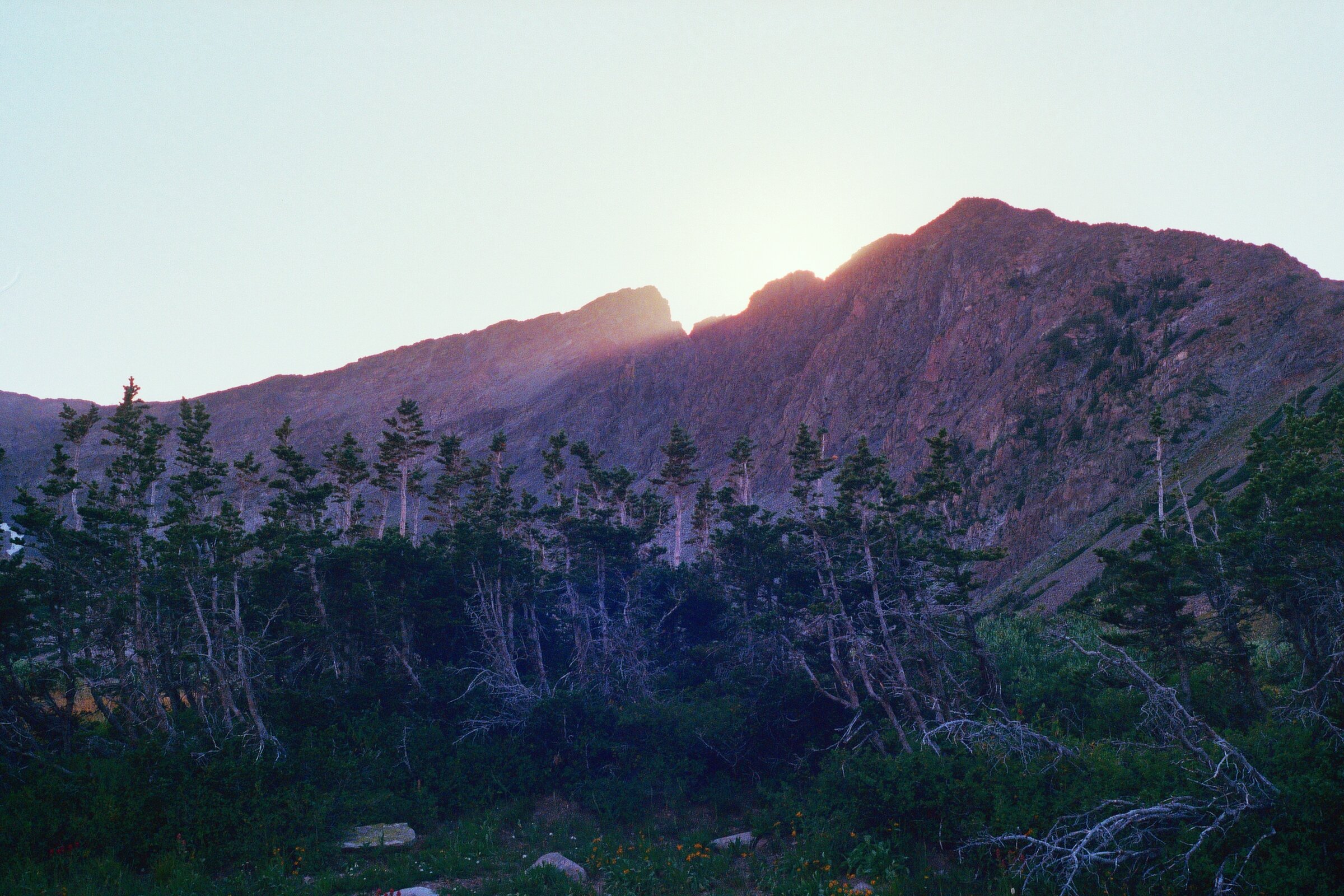PUERTO RICO

I read things.
I look at stuff.
I listen to sounds.
I consume it all.
I’ve never had the balls to outwardly call myself an “artist”. Not just a writer, an artist. Artists create art. Words are but a medium. Art transcends medium. Art transcends medium because it seeks to convey experience, and experience in turn transcends the senses.
I’d long thought that considering yourself an artist was a privilege available only to those who went to Parsons or have gallery shows or live full-time off of slinging repurposed trash bags on Etsy.
But no. You can be one too, if you so choose. No one but you can decide if you are indeed an artist.
Again, I’ve never had the confidence to say such a thing point blank. It makes me uncomfortable. When people ask me, “what do you do?” …I stumble. Maybe I reference my occupation in the geosciences. I might mention things I once did and rarely do now (and never did well), like skateboarding.
I’m insecure. I bet you are too.
The next time someone asks you, what do you do?
...tell them what you’d do with a free, no-strings attached hour gifted to you out of the heavens.
Would you walk? Garden? Cook? Write? Paint? Sculpt? That’s what you are, the doer of that.
In art, again, the mediums in question are negligible. It’s the message that counts. Likewise the inspiration might come from anywhere. No tangent is too deep, no snippet of thought too trivial. All catalysts are welcome in the world of art, so long as you permit them to fire off their respective reactions.
I try to remember these maxims when I write. No connection is too dumb, too banal if it’s felt in the heart or mind.
With this week’s article, I’ll break the Fourth Wall. I’d like to welcome you into how I lay these out, or rather, how I don’t. We will splay open this blog post and read it from the inside out.
We’ll microwave it.
When I write articles for this blog, I sit down and write the whole post on the spot (hence the polar vortex of typos). A singular, continuous excretion of unfiltered ramble. Specifically, I consider the place that I visited. Place, for me, is the main character. Our protagonist.
The personification of a place is a method into which I’ve fallen, one that welcomes readers into the experience of being there in ways that mass market travel writing (or, God forbid, SEO optimized blogging...a cardinal sin) cannot accomplish when preoccupied with informing you of the top three places to get an expensive coffee “off the beaten path” in “up and coming” neighborhoods with…[let’s just send it here on this one]….former industrial buildings now repurposed into lofts with local food trucks serving 15 dollar cochinita pibil tacos made by 25 year old Irish Americans from Grand Rapids who listen to Godsmack and Tech N9ne and roll grape flavored Dutch Master blunts in their used orange Mazdas.
RiNo in Denver, I’m looking at you.
Nope, God no. But personification is a method of particular efficacy amongst us humans. We are “persons” after all. In several of the six orthodox schools of Hinduism, what may appear to Westerners as polytheism is in fact symbolic. Many (not all) Hindus personify aspects of God into various deities, such as Hanuman, Lakshmi, Shiva, Kali, Vishnu, Krishna and others. Of the three soteriological paths of the Yoga school of philosophy, one, Bhakti, prescribes devotion to a personal god as a path to liberation. Profoundly, Bhakti theologians will admit that the god to which they pray is but a symbol of the Nameless Beyond The Named. They reason that conceptualizing and worshipping the indescribable is a trying if not impossible task for the average human (though some traditions, from Zen Buddhism to Jhana Yoga and forms of Christian Mysticism and Sufi Islam do prescribe this for those who so feel inclined). Instead, personifying the totality of existence translates its infinitude into a recognizable form, one with which us humans have plenty of intrinsic experience in navigating and one that us humans can practice affording unconditional love towards in a way that’s more natural than doing so towards the sum total of the Universe. The personification of place, I’d posit, is therefore an equally reasonable device. To capture the desolation and vastness of a place like the Sonora Desert or the force of tremendous waves along The Lost Coast ...it helps to liken them to attributes we ourselves tend to embody or appreciate. They didn’t call ‘em the Grand Tetons for nothing...
The place that we’ll discuss this week is the woman who’s been dealt every bad card. Hit with every tragedy, covered in scars, windswept, sunburned and yet still the most beautiful person in the crowd. She’s of an extravagant beauty, one that can’t be hidden. This is the best I can do in personifying a place that’s better understood in the flesh. Specifically, on a north-south trip via backroads across her abdomen and into the the innards of her very belly. Go to the tiny towns, the ones with no attractions, tucked deep beyond the winding, tortured farm roads that hug some of the highest peaks in this part of the world.
Places with names like Jayuya, Ciales, Uduado…these are unmatched, raw landscapes of karst and rain and green. More like the Andean cloud forests than anything you’d see in a Sandals resort commercial. Thank god for that.
If I can’t pull any of that off, any of that personification crap… I’ll still run a heavy duty warm cycle through the washing machine that is my brain until I’m left with comparisons that fellow humans can try on for size.
A random shuffling of Tarot cards to tell the tale, except unlike Tarot, it actually means something.
With that diatribe out of our flight path, let’s roll the dice and see what we get. Today’s subject is the enchanted island of Borinquen, a Taíno word meaning “the great land of the valiant and noble Lord”.
I’m talking about Puerto Rico.
With the mental dice rolled, we’ll want to balance our pitch, yaw, and roll as we navigate the first things that come to mind about this place and of my time spent in it. My slot machine’s reel plate springs into action...its shiny reels whirl in strokes of imaginary Technicolor until they slow to an intelligible gyration, then stop. The symbols stare back, asking of the gambler, of me, whether the jackpot has been hit or not. Here’s what I see:
I see Homer’s Odyssey.
I see Jurassic Park.
I hear Spanish poet Frederico Garcia Lorca’s poem ¡AY! From his 1921 collection “Poema del Cante Jondo” (“Poem of the Deep Song”).
I recall the message found on the inside jacket of Frank Zappa’s 1969 instrumental album masterpiece Hot Rats.
I hear the nighttime soundscape of Santana’s album Caravanserai’s opening track, Eternal Caravan of Reincarnation.
The nighttime soundscapes of Caravanserai then take me straight into Henri Rousseau’s jungle paintings.
I’m brought to La Sonora Ponceña, a prolific Puerto Rican salsa group, and specifically to their 1970 album Fuego en el 23! (and of the opening track of the same name).
I remember Walt Whitman’s poem This Compost, in step with my post last week.
As promised, I’ll break the Fourth Wall here and walk through each of these displaced bytes:
The Odyssey
Homer really kicked off Western Civilization with quite the bang. Two back to back hammers. The Iliad and The Odyssey remain the primordial epics of the Western literary canon. As such, most students, myself included, assume them to be boring and never open them. They download the CliffNotes and get a B- on the in-class multi-choice review, then move on. For the few who do read them, delightful violence and infighting blares out of the first few paragraphs. People watch Game of Thrones because they want what HBO has delivered on a silver patter for decades: tits, murder, power struggles and ass. If only Americans opened up either of Homer’s epics, with accounts of spearings piercing through soldiers backs and out their bladders on the other side (can we call attention to his creativity? Never seen that one before). Entire wars are waged over Helen, who presumably was, well, super hot. Where am I going with this? Fair question, to which I’m tempted to jest “the Greek Islands” and then list of a sub-chain. No, the connection here between The Odyssey and Puerto Rico is that feeling that only islands can give. The sense of slight variation from one to another, even with just miles separating them. The innate need to know what the next one on the horizon holds...the rush felt traveling between them...the captivating wonder only known from the vistas of island peaks as one looks out into the sea. The Greeks had a special word for “the journey home at sea” as lived by Ulysses: nostos. Puerto Rico’s dramatic topography presents opportunities for the living out of nostos. In Greek mythology, the concept refers not just to the literal journeying home of the protagonist, but to the struggle to retain identity upon return. Puerto Rico represents for me a positive play on nostos in that one struggles to not be benevolently changed by the place, a feeling that fails to disappear as one walks up the fourth floor walk up of a New York apartment building listening to Uzbeks fight about missing trash day in the unit above.
Jurassic Park
While without dinosaurs, PR’s more rural areas yield similar feelings of having arrived on a prehistoric island ways away from the mainland.
By character Ian Malcolm, played by Jeff Goldblum: “If there's one thing the history of evolution has taught us, it's that life will not be contained. Life breaks free, it expands to new territories, and crashes through barriers painfully, maybe even dangerously, but, uh, well, there it is.”
Many of Puerto Rico’s buildings have been overtaken by vegetation. You’ll see this in every corner of the island, especially the lusher eastern and central areas. The cliche depiction of the forest swallowing up any trace of past civilization happens here, though at what seems to be an even faster rate (see photos). In Puerto Rico, life ebulliates up from the core of the Borinquen landmass.
Federico Garcia Lorca’s poem
(Leave me here, in this field,
weeping.)
The whole world’s broken.
Only silence remains.
(Leave me here, in this field,
weeping.)
The darkened horizon’s
bitten by bonfires.
(I’ve told you already to leave me
here, in this field,
weeping.)
The destruction of Hurricane Maria remains evident in every corner in Puerto Rico. In some areas, the majority of homes are abandoned and destroyed. Random assortments of structural materials, appliances and vehicles are strewn across the landscape. “The whole world is broken, only silence remains”. Still, the peril of the built world remains underpinned by Puerto Rico’s rarified natural beauty. In 2015, well before the birth of this blog, I wrote an article about the peppering of bombed building remains across an otherwise beautiful field in a remote valley of Antioquia, Colombia. The power of the hurricane that Puerto Rico suffered, at least as gauged by what’s left, appears to have been level beyond anything I saw in that wartorn, gorgeous country to the south.
The message in the inside jacket of Frank Zappa’s album Hot Rats
It’s “a movie for your ears”, proclaims Zappa. Puerto Rico, too, is a movie for your ears. In every corner of the island, you’ll hear a nighttime symphony of birds, insects, wind, and rain, all guided forward by the collective metronome of the endemic coqui frog...a frog whose call is considered by many puertorriqueños to be the quintessential sound of Borinquen. Strange, otherwordly noises…noises that few can make sense of, like a Zappa or Miles Davis. Waves of discordance and harmony pulsate, back and forth, back and forth.
Eternal Caravan of Reincarnation [the opening track on Santana’s Caravanserai]
Whereas Zappa’s quote articulates the experience of nighttime on a tropical island, this track stands as a psychedelic example of how hearing that sound at night feels. You’re transported. That’s all I could ever ask for in travel, to feel transported. This entire album does that for me, traveling through fantastical, dreamt up worlds on a magic carpet of Latin rhythms. It’s the perfect album to listen to while cruising around any part of Latin America, Puerto Rico being no exception. So we did exactly that.
This has little do with anything...but at one point, somewhere in the southeast of the island, we dropped out of the high country of the mountainous interior and down into a verdant plain...there were strange trees that reminded us of the umbrella thorn acacias (Vachellia tortilis) of the Tanzanian Serengeti...rolling hills were draped with purple hue as the sun set over the westerly side of the island, landing on pastel-painted homes along their base...we dove back into the trees on the other side of the field right as the solo from Song of The Wind took off on the car’s speakers…
It was a simple moment of perfect, unadulterated contentment that I’ll never forget.
Henri Rousseau’s Jungle Paintings
No need to explain this one. Take a look for yourself:
Henri Rousseau, 1844 - 1910.
La Sonora Ponceña
No symbolism here. Just an epic Puerto Rican salsa ensemble that’s been playing since the fifties. The fifties! Listen on Spotify.
And with that, with the discordance of my slot’s machine’s output, I look back at the photos. I’ll see in them the tale, the thread, the proverbial chord progression…and the rest just flows.
I won’t do that here, not in this article. Puerto Rico is one of the most beautiful places on Earth, certainly in all of America. I can’t get over how a place can be so ravaged by economic collapse, by natural disasters, by political neglect…and yet still remain beautiful.
In describing America, a land of great contrast, I turn to our forever poet, Walt Whitman, the last on my list of inspirations evoked by “the great land of the noble and valiant Lord”. A towering figure capable of extracting songs from streams to apples, from Brooklyn to Maine. Did Walt ever venture to Puerto Rico? No. Yet his description of the process of Nature turning Death into Beauty, of decay into triumph…this particular poem that follows encapsulates the grand show to which I feel a witness when walking the varied soils of this unique island paradise. It speaks of the formula behind Puerto Rico’s terroir…a thought with which I’ve been fascinated as of late.
I will leave you with excerpts from this lengthy poem, followed by some of the shots I liked best from the many rolls I brought along. A place like this doesn’t need a babbling part-time New York writer to tell its story. Place like these tell themselves. Enjoy:
From his famed collection Leaves of Grass, “This Compost”, Walt Whitman (abridged):
Something startles me where I thought I was
safest;
I withdraw from the still woods I loved;
I will not go now on the pastures to walk;
I will not strip the clothes from my body to meet my
lover the sea;
I will not touch my flesh to the earth, as to other
flesh, to renew me.
How can the ground not sicken?
How can you be alive, you growths of spring?
How can you furnish health, you blood of herbs,
roots, orchards, grain?
Are they not continually putting distemper'd corpses
in you?
Is not every continent work'd over and over with sour
dead?
Where have you disposed of their carcasses?
Those drunkards and gluttons of so many genera-
tions;
Where have you drawn off all the foul liquid and
meat?
I do not see any of it upon you to-day—or perhaps I
am deceiv'd;
I will run a furrow with my plough—I will press my
spade through the sod, and turn it up under-
neath;
I am sure I shall expose some of the foul meat.
Behold this compost! behold it well!
Perhaps every mite has once form'd part of a sick
person—Yet behold!
The delicate spear of the onion pierces upward,
The apple-buds cluster together on the apple-branches,
The resurrection of the wheat appears with pale visage
out of its graves,
The tinge awakes over the willow-tree and the mul-
berry-tree,
The he-birds carol mornings and evenings, while the
she-birds sit on their nests,
The young of poultry break through the hatch'd eggs,
The new-born of animals appear—the calf is dropt
from the cow, the colt from the mare,
Out of its little hill faithfully rise the potato's dark
green leaves,
Out of its hill rises the yellow maize-stalk;
The summer growth is innocent and disdainful above
all those strata of sour dead.
What chemistry!
That the winds are really not infectious,
That this is no cheat, this transparent green-wash of
the sea, which is so amorous after me,
That it is safe to allow it to lick my naked body all
over with its tongues,
That it will not endanger me with the fevers that
have deposited themselves in it,
That all is clean forever and forever,
That the cool drink from the well tastes so good,
That blackberries are so flavorous and juicy,
That the fruits of the apple-orchard, and of the
orange-orchard—that melons, grapes, peaches,
plums, will none of them poison me,
That when I recline on the grass I do not catch any
disease,
Though probably every spear of grass rises out of
what was once a catching disease.
Now I am terrified at the earth! it is that calm and
patient,
It grows such sweet things out of such corruptions,
It turns harmless and stainless on its axis, with such
endless successions of diseas'd corpses,
It distils such exquisite winds out of such infused
fetor,
It renews with such unwitting looks, its prodigal,
annual, sumptuous crops,
It gives such divine materials to men, and accepts
such leavings from them at last.
Behold, Puerto Goddamn Rico, Isla del Encanto:
Kodak Portra 800, Pentax K1000
My best friend Danny, taking it all in on the Western side of the island. Kodak Portra 800, Pentax K1000
A small village on the outskirts of El Yunque National Forest. Kodak Portra 800, Pentax K1000
Nearly every road on the island had pretty views. Kodak Portra 800, Pentax K1000
El Yunque. Kodak Portra 800, Pentax K1000
Kodak Portra 800, Pentax K1000
Kodak Portra 800, Pentax K1000
Kodak Portra 800, Pentax K1000
Kodak Portra 800, Pentax K1000
Kodak Portra 800, Pentax K1000
Kodak Portra 800, Pentax K1000
Kodak Portra 800, Pentax K1000
Kodak Portra 800, Pentax K1000
Kodak Portra 800, Pentax K1000
Kodak Portra 800, Pentax K1000
Kodak Portra 800, Pentax K1000
Kodak Portra 800, Pentax K1000
Kodak Portra 800, Pentax K1000
Kodak Portra 800, Pentax K1000
Random beach in the middle of nowhere, in between mangroves. Southwestern side of island. Kodak Portra 800, Pentax K1000
Sunset over the West, towards the Dominican Republic and Haiti.
“Eden” Kodak Portra 800, Pentax K1000
Kodak Portra 800, Pentax K1000
A shot out the window from perhaps the “deepest” drive we took into the interior of the island. We were on pothole-laden roads that had clearly been annihilated by Hurricane Maria, miles and miles back into farmland. I felt transported back to the small towns of Colombia where I’d once lived. This was a highlight for me…finding places like this in the US, still even in the 21st century a total bitch to get to. Kodak Portra 800, Pentax K1000
Kodak Portra 800, Pentax K1000
Kodak Portra 800, Pentax K1000
Kodak Portra 800, Pentax K1000
Kodak Portra 800, Pentax K1000
Kodak Portra 800, Pentax K1000
Kodak Portra 800, Pentax K1000
Kodak Portra 800, Pentax K1000
Kodak Portra 800, Pentax K1000
Backstreets of San Juan. Kodak Portra 800, Pentax K1000
Kodak Portra 800, Pentax K1000
Remote town, with El Yunque National Forest off in the distance. Southeast side of the island. Kodak Portra 800, Pentax K1000
Near Cabo Rojo. Kodak Portra 800, Pentax K1000
El Yunque. Kodak Portra 800, Pentax K1000
Southeast side of the island, on random backroad. Kodak Portra 800, Pentax K1000
Kodak Portra 800, Pentax K1000
Looking south across the Caribbean. Kodak Portra 800, Pentax K1000
Kodak Portra 800, Pentax K1000
Somewhere east of San Juan. Kodak Portra 800, Pentax K1000
Kodak Portra 800, Pentax K1000
Kodak Portra 800, Pentax K1000
El Yunque. Kodak Portra 800, Pentax K1000
El Yunque. Kodak Portra 800, Pentax K1000
Kodak Portra 800, Pentax K1000
Kodak Portra 800, Pentax K1000
Danny, on a not-at-all-chill backroad off the main route through El Yunque. Kodak Portra 800, Pentax K1000
Playa Sucia. Kodak Portra 800, Pentax K1000
Slightly different angle that missed some of the bay but caught better shadowing on the clouds. Playa Sucia. Kodak Portra 800, Pentax K1000

























































